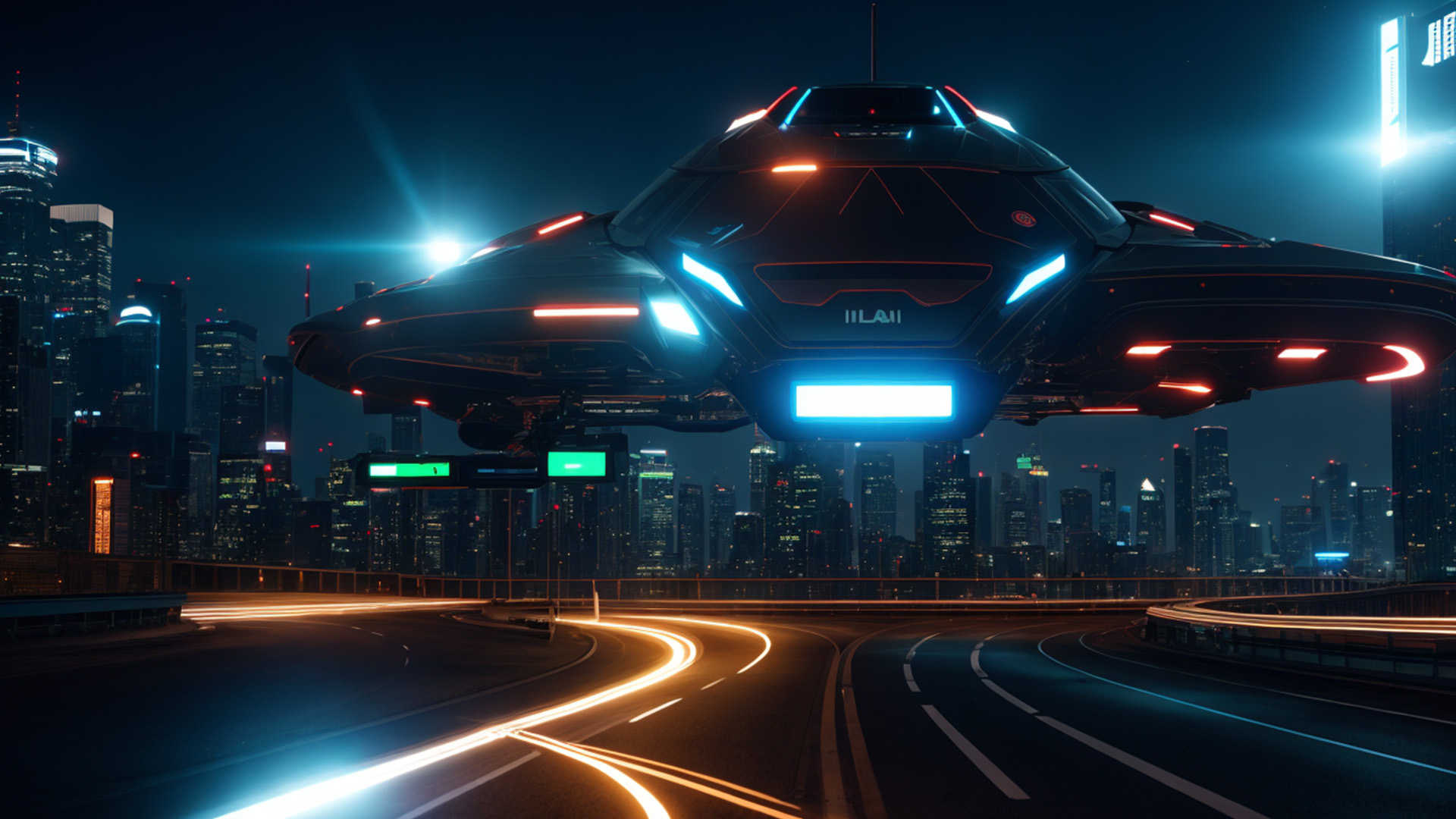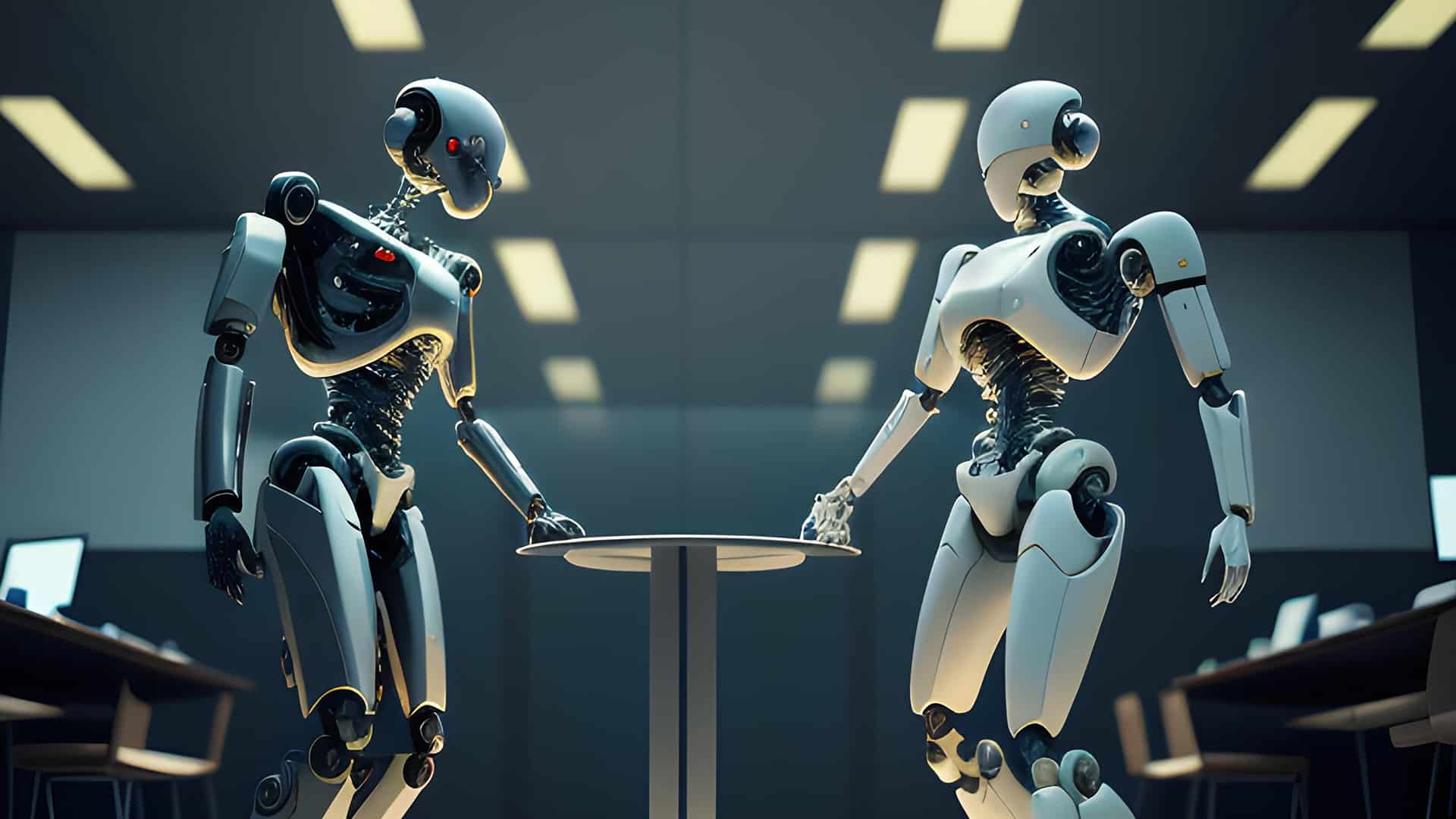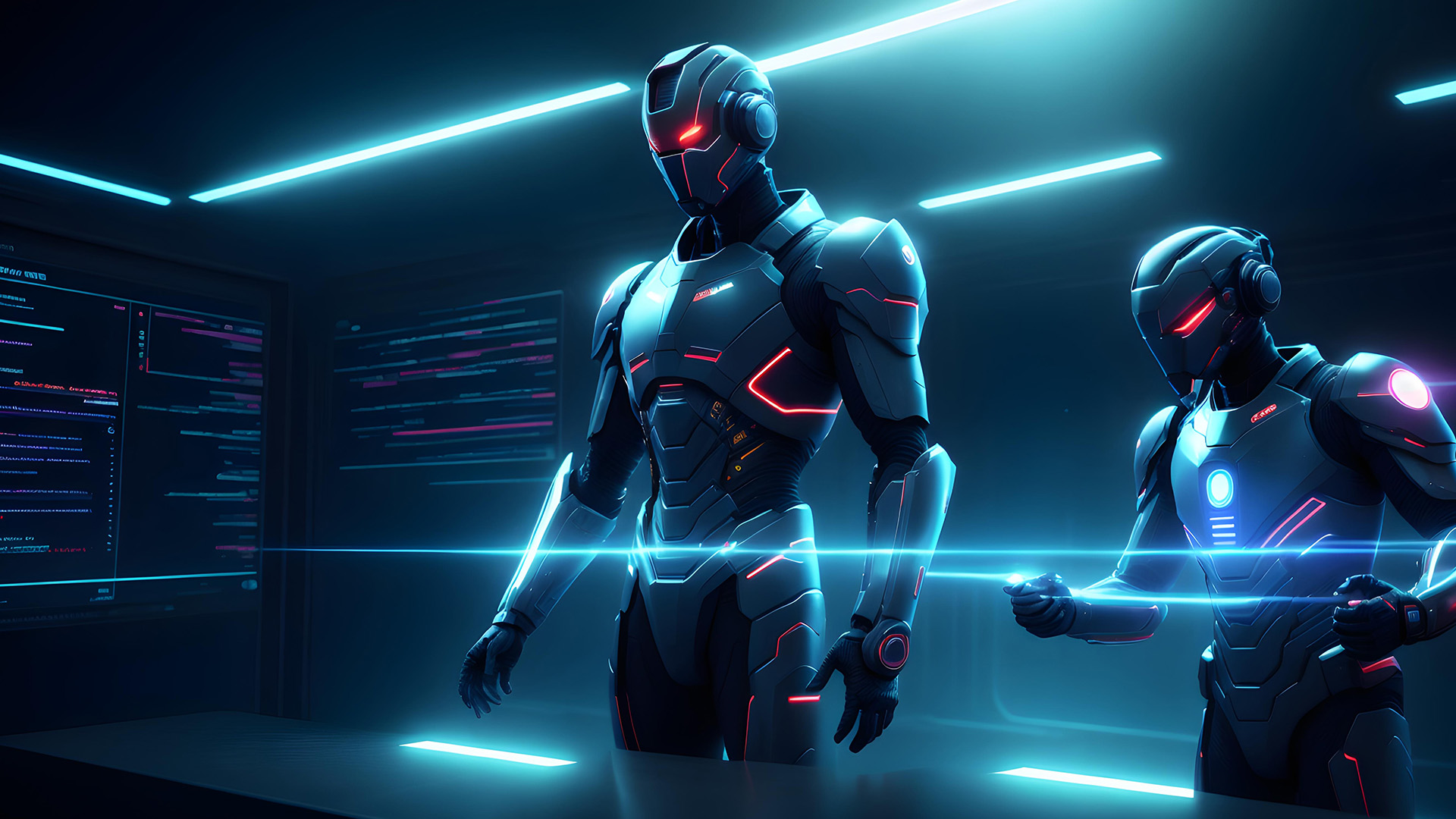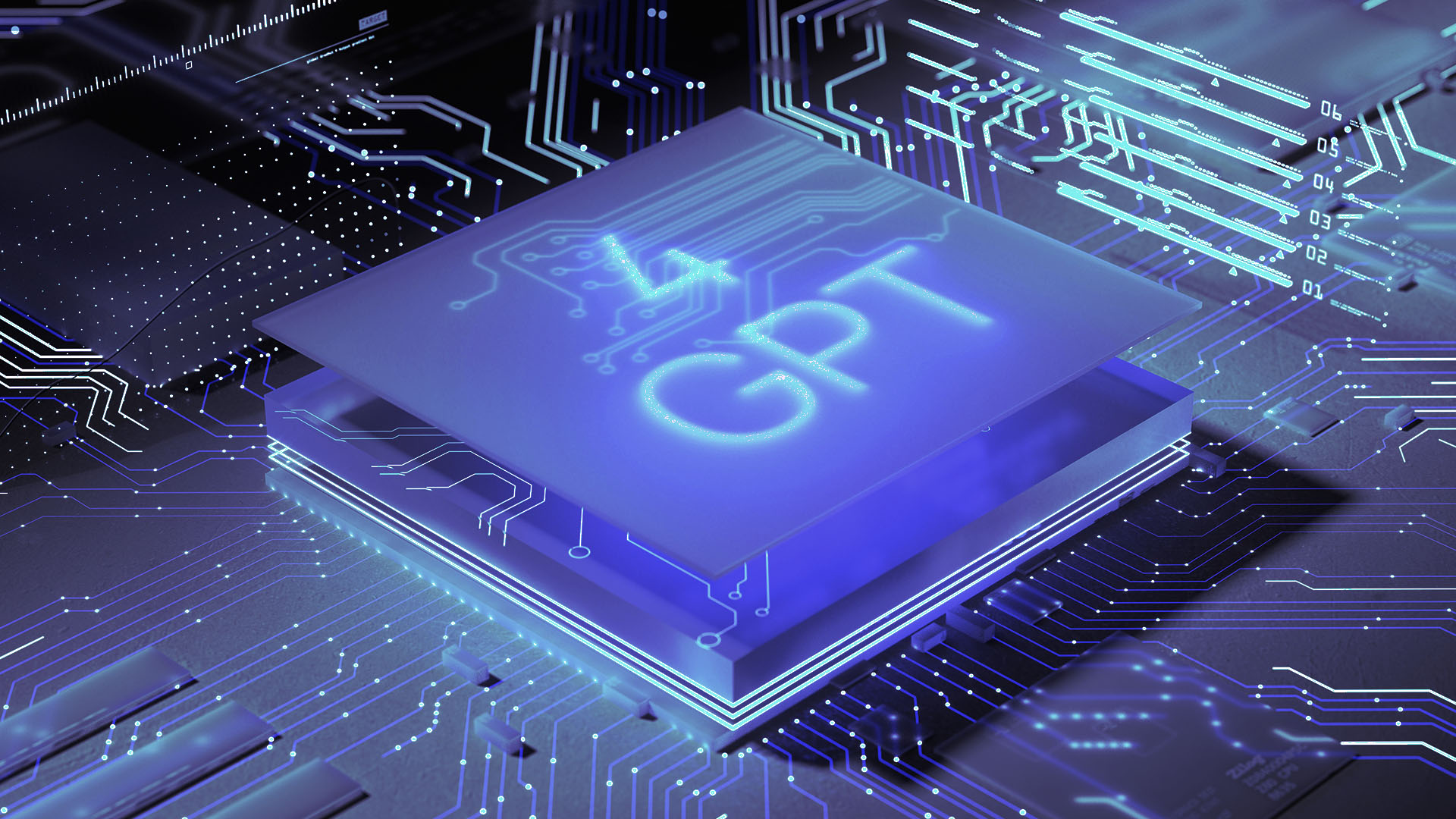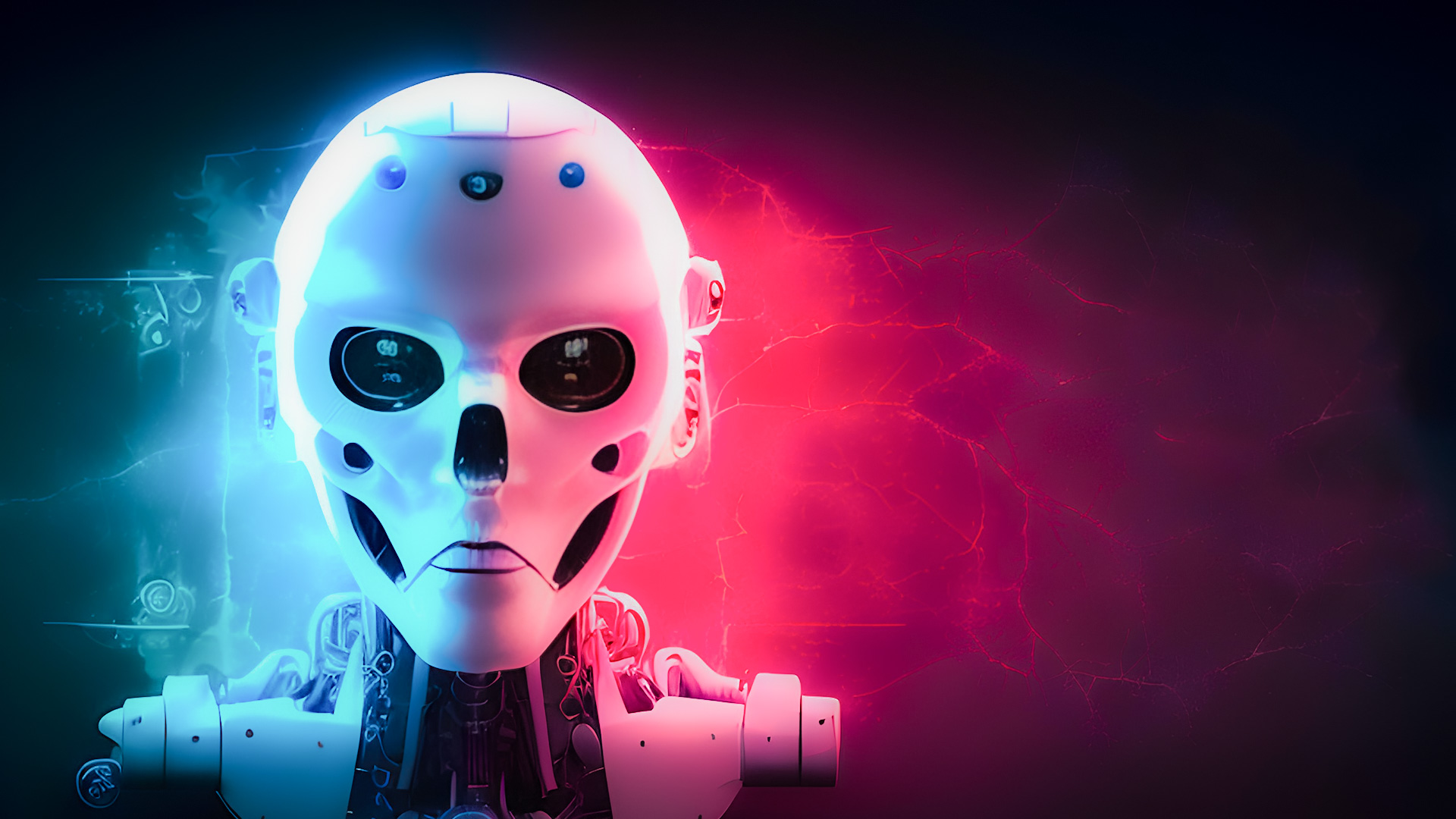AI Game Development: Revolutionizing the Game Industry
Article Updated on June 6, 2023
Artificial Intelligence (AI) has been a transformative force across various sectors, and the game industry is no exception.
From enhancing graphics to driving non-player character (NPC) behavior, AI game development is taking the gaming world by storm. Companies like Nvidia are at the forefront, innovating and influencing the industry’s growth and evolution.
The Emergence of AI in the Game Industry
AI is no stranger to the game industry. Its initial foray into this space was rather humble, largely limited to driving non-player character (NPC) behavior based on pre-defined rules. However, as AI algorithms have advanced, so have their applications in game development.
Modern AI technologies like machine learning, deep learning, and neural networks now play integral roles in the creation and enhancement of video games. They are employed to generate realistic NPC behaviors, create complex and dynamic in-game environments, and even design entire game levels.
These technologies can learn, adapt, and improve continuously, bringing an unprecedented level of immersion and realism to the gaming experience.
The relationship between AI and the game industry is deeply symbiotic. While AI provides game developers with the tools to create more engaging and personalized experiences for players, the game industry offers a complex, dynamic, and diverse environment in which AI can evolve and test its limits.
AI Image Generation
Concept art has been used for decades in the game development process. Often, game companies will use their concept art in articles and videos that highlight the journey they undertook when developing their game, with some even selling hardback books filled with art from the development process!
AI image generation software like Stable Diffusion and Midjourney can be valuable tools for videogame concept art. They offer the potential to enhance creativity, streamline workflows, and provide a new level of flexibility and innovation in concept art design.
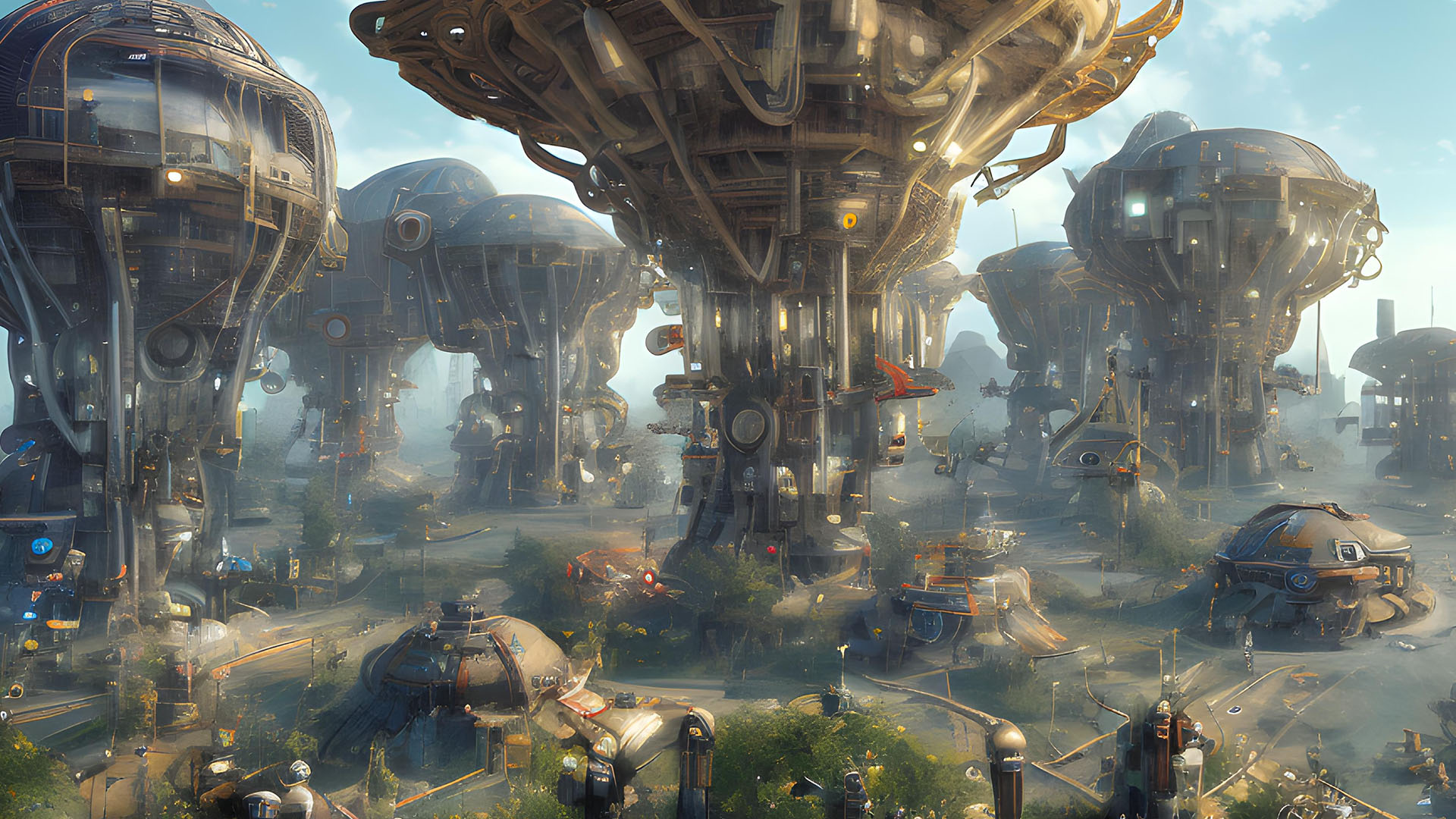
An Example of Videogame Concept Art using AI Image Generation
However, it’s crucial that these technologies are used in a way that supports and amplifies the talents of human artists, rather than undermining them. The future of videogame concept art will likely involve a symbiotic relationship between AI and human creativity, leveraging the strengths of both to create truly compelling and immersive game worlds.
ChatGPT
OpenAI’s ChatGPT has potential implications for the development of non-player character (NPC) dialogues and behaviors in video games. NPCs could utilize technology similar to ChatGPT to deliver more realistic and dynamic conversations, adding depth to character interactions and making game worlds feel more alive and immersive.
NPCs could potentially adapt their dialogues and interactions based on player’s decisions and actions in the game, leading to a more personalized gaming experience.
However, challenges exist here as well. Ensuring that AI-generated dialogues align with a game’s narrative and the character’s personality could be a complex task. Plus, while ChatGPT can generate human-like text, it does not understand the content in the way humans do. This can lead to responses that are off-topic or nonsensical in the context of the game’s storyline or a player’s actions.
The Evolution of Game AI
AI has come a long way since the days of simple rule-based systems. Today, AI-driven NPCs can mimic human-like behavior, displaying a level of complexity and nuance that enhances player immersion. Advanced pathfinding algorithms enable NPCs to navigate intricate environments, while decision-making systems imbue them with the ability to respond to player actions in an organic, unscripted manner.
AI is also used in procedural content generation, a technique that uses algorithms to create game content automatically or semi-automatically. This could range from creating vast, explorable worlds to crafting intricate, multi-branched narratives. Procedural content generation not only helps create expansive game worlds but also ensures that every player’s experience is unique.
Nvidia: Pioneering AI Game Development
No discussion of AI game development would be complete without mentioning the influential role of tech giant Nvidia. Best known for their Graphics Cards, Nvidia has been a game-changer (quite literally) in the gaming industry. Lets explore the many areas where Nvidia has had a profound impact.
Hardware Innovations
One of the key areas where Nvidia has been influential is in the development of powerful GPUs designed for AI computations. Nvidia’s GPUs are specifically designed to handle the massive volumes of data and complex calculations required for deep learning, a subset of AI.
These GPUs accelerate the training of AI models, making them an indispensable tool in the AI development process. Their cutting-edge GPUs have become a fundamental asset for game developers, enabling the creation of intricate, AI-driven game elements.
DLSS and DLAA
Deep Learning Super Sampling (DLSS) and Deep Learning Anti Aliasing (DLAA) are two of Nvidia’s revolutionary technologies that have significantly impacted game graphics. DLSS utilizes AI to upscale lower-resolution images in real-time, providing high-quality visuals without the need for heavy computational power. This enables games to run smoothly with superior graphical fidelity even on less powerful hardware.
DLAA, on the other hand, uses AI to perform anti-aliasing with extreme precision. It helps to smooth the edges of in-game objects and reduce visual artifacts, providing a superior, immersive visual experience for players.
AI Research and Development
Nvidia is also a key player in AI research and development, consistently investing in and pushing the boundaries of AI technologies. Through initiatives like the Nvidia Deep Learning Institute, the company provides training to developers and researchers worldwide, accelerating the understanding and application of AI in various fields, including gaming.
The Promising Future of AI in the Game Industry
The potential future of AI in the game industry is as vast as it is exciting. The swift evolution of AI technologies promises a host of advancements that could profoundly transform the way games are developed and experienced.
Immersive and Dynamic Gameplay
One of the most promising areas of AI advancement is in creating increasingly immersive gameplay. Future games may employ advanced AI to adapt to individual player behaviors, tailoring gameplay to provide a more personalized and engaging experience. Imagine a game that learns from your actions, adjusts its difficulty level to match your skill, or introduces plot twists based on your in-game decisions.
Advanced Non-Player Characters
The NPCs of tomorrow will likely be far more complex and realistic than those of today, thanks to AI. Future games could feature NPCs that react more intelligently and display behaviors as varied and nuanced as those of human players. They might exhibit a broad range of emotions, have their own evolving narratives, or even develop relationships with players that change over time.
Dynamic Game Worlds
AI could also transform the very environments in which games are set. Imagine game worlds that are dynamically generated and evolve based on player actions, creating unique and compelling narratives. These AI-driven environments could change with the passage of time, react to in-game events, or adapt to reflect player decisions, making the gaming experience more dynamic and immersive than ever before.
Streamlined Game Development
Beyond enhancing gameplay, AI has the potential to revolutionize the game development process itself. It could automate repetitive tasks, assist with complex design elements, or even generate entire game levels or plots automatically, dramatically increasing efficiency and reducing development times. This would free up developers to focus more on the creative aspects of game design, leading to even more innovative and exciting games.
Improved Graphics and Realism
With technologies like DLSS and DLAA, AI is already enhancing the graphical fidelity of games. In the future, these technologies could be refined further, delivering visuals so clear and detailed that they blur the line between the virtual and the real. Coupled with the potential of AI to simulate realistic physics and environmental effects, this could lead to unparalleled levels of realism in gaming.
Collaborative AI and Multiplayer Experiences
AI could also transform multiplayer gaming experiences. Future games could feature collaborative AI that works alongside human players, intelligently supporting their actions and strategies. Alternatively, AI could be used to simulate human-like competitors, providing a challenging and engaging gameplay experience even when playing alone.
The Downsides of AI in the Game Industry
While AI offers significant potential benefits for the gaming industry, it also brings challenges that need careful consideration and responsible handling. It’s essential for the gaming industry to navigate these issues thoughtfully, ensuring a future where AI is used ethically and sustainably, to enhance rather than detract from the gaming experience.
Job Displacement
One significant concern is that as AI becomes more advanced, it could potentially automate tasks currently performed by human developers. While this might lead to increased efficiency, it could also displace jobs, particularly in areas like quality assurance testing and basic design tasks. Game developers will need to continue adapting and learning new skills to stay relevant in this evolving industry.
Impersonal Experiences
While AI can enhance personalization in games, there’s also a risk that it could lead to experiences that feel overly engineered or impersonal. The spontaneity and unpredictability of human players and developers are part of what makes games engaging and fun. There’s a risk that AI-generated content could lack the charm and creativity of human-created content.
Over-Reliance on Technology
As AI continues to advance, there’s a risk that developers might become over-reliant on it, potentially hindering creativity and innovation. Game development is as much an art as it is a science, and the human touch is crucial for crafting engaging narratives and game experiences.
Conclusion
AI game development is ushering in a new era in the gaming industry. With its capacity to enhance gameplay, transform development processes, and create immersive, personalized experiences, AI is revolutionizing the way we create, play, and experience games.
Influential companies like Nvidia are playing a key role in this transformation, leading the charge with innovative technologies and setting new standards in AI game development. For gamers and game developers alike, the future of AI in the game industry is a thrilling prospect that promises to take us on an exciting journey of discovery, innovation, and fun.
What are your thoughts on AI in the game industry? Get the conversation started by leaving a comment below!
Comments
AI Game Development: Revolutionizing the Game Industry
Article Updated on June 6, 2023
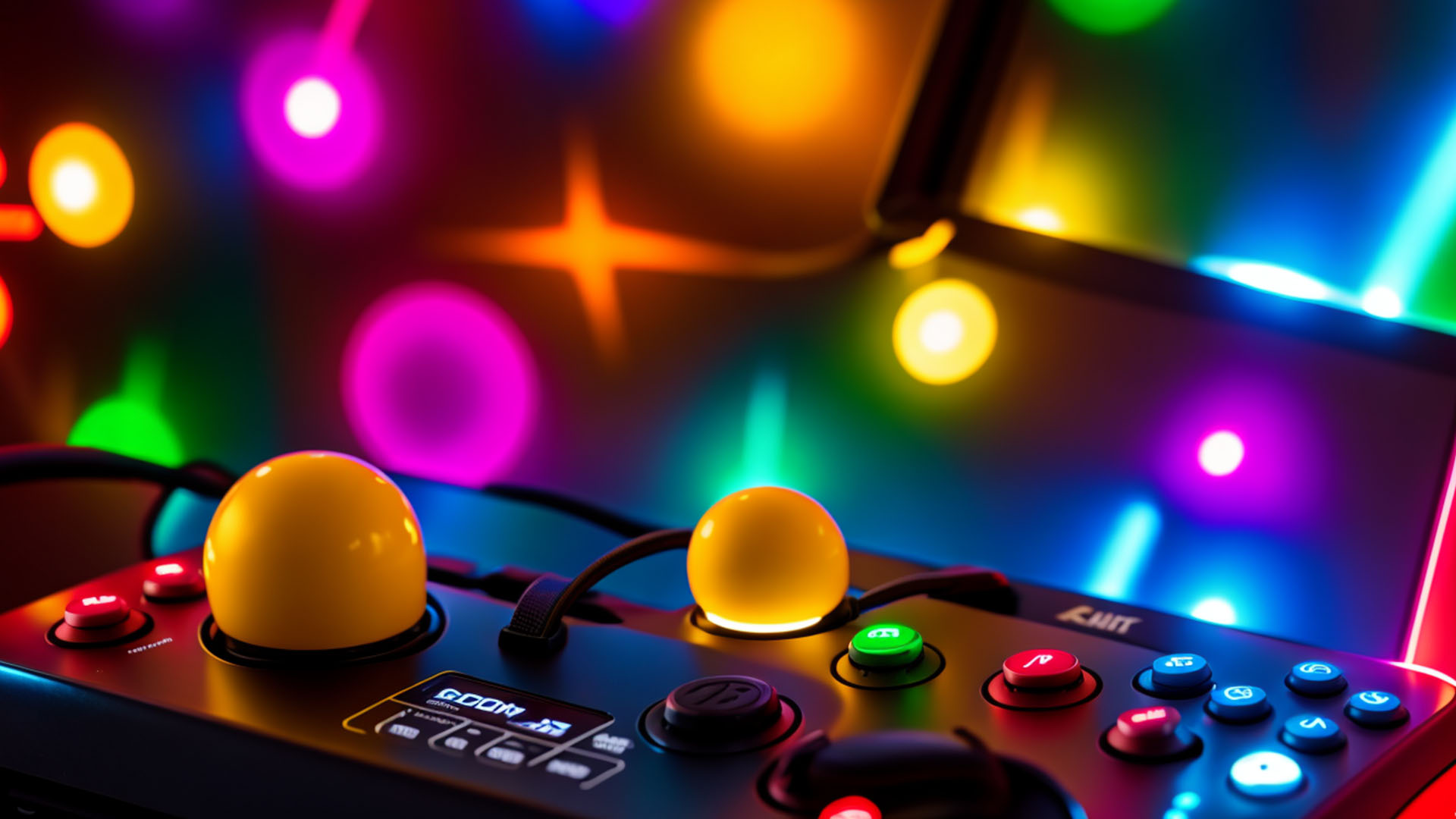
Artificial Intelligence (AI) has been a transformative force across various sectors, and the game industry is no exception.
From enhancing graphics to driving non-player character (NPC) behavior, AI game development is taking the gaming world by storm. Companies like Nvidia are at the forefront, innovating and influencing the industry’s growth and evolution.
The Emergence of AI in the Game Industry
AI is no stranger to the game industry. Its initial foray into this space was rather humble, largely limited to driving non-player character (NPC) behavior based on pre-defined rules. However, as AI algorithms have advanced, so have their applications in game development.
Modern AI technologies like machine learning, deep learning, and neural networks now play integral roles in the creation and enhancement of video games. They are employed to generate realistic NPC behaviors, create complex and dynamic in-game environments, and even design entire game levels.
These technologies can learn, adapt, and improve continuously, bringing an unprecedented level of immersion and realism to the gaming experience.
The relationship between AI and the game industry is deeply symbiotic. While AI provides game developers with the tools to create more engaging and personalized experiences for players, the game industry offers a complex, dynamic, and diverse environment in which AI can evolve and test its limits.
AI Image Generation
Concept art has been used for decades in the game development process. Often, game companies will use their concept art in articles and videos that highlight the journey they undertook when developing their game, with some even selling hardback books filled with art from the development process!
AI image generation software like Stable Diffusion and Midjourney can be valuable tools for videogame concept art. They offer the potential to enhance creativity, streamline workflows, and provide a new level of flexibility and innovation in concept art design.

An Example of Videogame Concept Art using AI Image Generation
However, it’s crucial that these technologies are used in a way that supports and amplifies the talents of human artists, rather than undermining them. The future of videogame concept art will likely involve a symbiotic relationship between AI and human creativity, leveraging the strengths of both to create truly compelling and immersive game worlds.
ChatGPT
OpenAI’s ChatGPT has potential implications for the development of non-player character (NPC) dialogues and behaviors in video games. NPCs could utilize technology similar to ChatGPT to deliver more realistic and dynamic conversations, adding depth to character interactions and making game worlds feel more alive and immersive.
NPCs could potentially adapt their dialogues and interactions based on player’s decisions and actions in the game, leading to a more personalized gaming experience.
However, challenges exist here as well. Ensuring that AI-generated dialogues align with a game’s narrative and the character’s personality could be a complex task. Plus, while ChatGPT can generate human-like text, it does not understand the content in the way humans do. This can lead to responses that are off-topic or nonsensical in the context of the game’s storyline or a player’s actions.
The Evolution of Game AI
AI has come a long way since the days of simple rule-based systems. Today, AI-driven NPCs can mimic human-like behavior, displaying a level of complexity and nuance that enhances player immersion. Advanced pathfinding algorithms enable NPCs to navigate intricate environments, while decision-making systems imbue them with the ability to respond to player actions in an organic, unscripted manner.
AI is also used in procedural content generation, a technique that uses algorithms to create game content automatically or semi-automatically. This could range from creating vast, explorable worlds to crafting intricate, multi-branched narratives. Procedural content generation not only helps create expansive game worlds but also ensures that every player’s experience is unique.
Nvidia: Pioneering AI Game Development
No discussion of AI game development would be complete without mentioning the influential role of tech giant Nvidia. Best known for their Graphics Cards, Nvidia has been a game-changer (quite literally) in the gaming industry. Lets explore the many areas where Nvidia has had a profound impact.
Hardware Innovations
One of the key areas where Nvidia has been influential is in the development of powerful GPUs designed for AI computations. Nvidia’s GPUs are specifically designed to handle the massive volumes of data and complex calculations required for deep learning, a subset of AI.
These GPUs accelerate the training of AI models, making them an indispensable tool in the AI development process. Their cutting-edge GPUs have become a fundamental asset for game developers, enabling the creation of intricate, AI-driven game elements.
DLSS and DLAA
Deep Learning Super Sampling (DLSS) and Deep Learning Anti Aliasing (DLAA) are two of Nvidia’s revolutionary technologies that have significantly impacted game graphics. DLSS utilizes AI to upscale lower-resolution images in real-time, providing high-quality visuals without the need for heavy computational power. This enables games to run smoothly with superior graphical fidelity even on less powerful hardware.
DLAA, on the other hand, uses AI to perform anti-aliasing with extreme precision. It helps to smooth the edges of in-game objects and reduce visual artifacts, providing a superior, immersive visual experience for players.
AI Research and Development
Nvidia is also a key player in AI research and development, consistently investing in and pushing the boundaries of AI technologies. Through initiatives like the Nvidia Deep Learning Institute, the company provides training to developers and researchers worldwide, accelerating the understanding and application of AI in various fields, including gaming.
The Promising Future of AI in the Game Industry
The potential future of AI in the game industry is as vast as it is exciting. The swift evolution of AI technologies promises a host of advancements that could profoundly transform the way games are developed and experienced.
Immersive and Dynamic Gameplay
One of the most promising areas of AI advancement is in creating increasingly immersive gameplay. Future games may employ advanced AI to adapt to individual player behaviors, tailoring gameplay to provide a more personalized and engaging experience. Imagine a game that learns from your actions, adjusts its difficulty level to match your skill, or introduces plot twists based on your in-game decisions.
Advanced Non-Player Characters
The NPCs of tomorrow will likely be far more complex and realistic than those of today, thanks to AI. Future games could feature NPCs that react more intelligently and display behaviors as varied and nuanced as those of human players. They might exhibit a broad range of emotions, have their own evolving narratives, or even develop relationships with players that change over time.
Dynamic Game Worlds
AI could also transform the very environments in which games are set. Imagine game worlds that are dynamically generated and evolve based on player actions, creating unique and compelling narratives. These AI-driven environments could change with the passage of time, react to in-game events, or adapt to reflect player decisions, making the gaming experience more dynamic and immersive than ever before.
Streamlined Game Development
Beyond enhancing gameplay, AI has the potential to revolutionize the game development process itself. It could automate repetitive tasks, assist with complex design elements, or even generate entire game levels or plots automatically, dramatically increasing efficiency and reducing development times. This would free up developers to focus more on the creative aspects of game design, leading to even more innovative and exciting games.
Improved Graphics and Realism
With technologies like DLSS and DLAA, AI is already enhancing the graphical fidelity of games. In the future, these technologies could be refined further, delivering visuals so clear and detailed that they blur the line between the virtual and the real. Coupled with the potential of AI to simulate realistic physics and environmental effects, this could lead to unparalleled levels of realism in gaming.
Collaborative AI and Multiplayer Experiences
AI could also transform multiplayer gaming experiences. Future games could feature collaborative AI that works alongside human players, intelligently supporting their actions and strategies. Alternatively, AI could be used to simulate human-like competitors, providing a challenging and engaging gameplay experience even when playing alone.
The Downsides of AI in the Game Industry
While AI offers significant potential benefits for the gaming industry, it also brings challenges that need careful consideration and responsible handling. It’s essential for the gaming industry to navigate these issues thoughtfully, ensuring a future where AI is used ethically and sustainably, to enhance rather than detract from the gaming experience.
Job Displacement
One significant concern is that as AI becomes more advanced, it could potentially automate tasks currently performed by human developers. While this might lead to increased efficiency, it could also displace jobs, particularly in areas like quality assurance testing and basic design tasks. Game developers will need to continue adapting and learning new skills to stay relevant in this evolving industry.
Impersonal Experiences
While AI can enhance personalization in games, there’s also a risk that it could lead to experiences that feel overly engineered or impersonal. The spontaneity and unpredictability of human players and developers are part of what makes games engaging and fun. There’s a risk that AI-generated content could lack the charm and creativity of human-created content.
Over-Reliance on Technology
As AI continues to advance, there’s a risk that developers might become over-reliant on it, potentially hindering creativity and innovation. Game development is as much an art as it is a science, and the human touch is crucial for crafting engaging narratives and game experiences.
Conclusion
AI game development is ushering in a new era in the gaming industry. With its capacity to enhance gameplay, transform development processes, and create immersive, personalized experiences, AI is revolutionizing the way we create, play, and experience games.
Influential companies like Nvidia are playing a key role in this transformation, leading the charge with innovative technologies and setting new standards in AI game development. For gamers and game developers alike, the future of AI in the game industry is a thrilling prospect that promises to take us on an exciting journey of discovery, innovation, and fun.
What are your thoughts on AI in the game industry? Get the conversation started by leaving a comment below!


